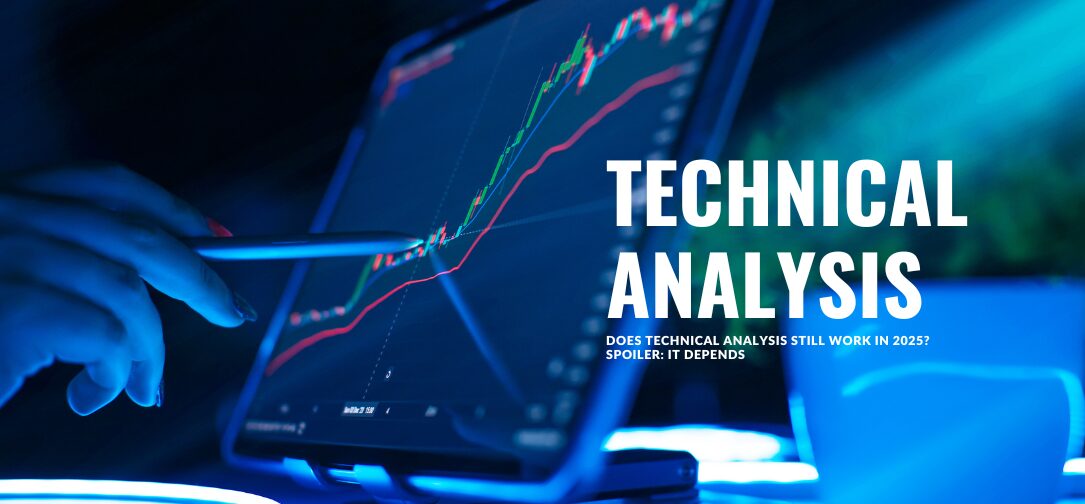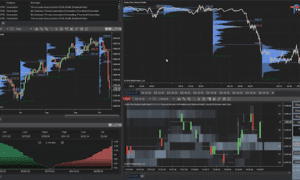From AI-driven algorithms to market noise — discover when charts help and when they mislead.
What if your favorite chart pattern is actually lying to you?
Technical analysis has guided traders for decades, but in 2025, markets move at machine‑speed and algorithms can front‑run your every move. In this article, we’ll dissect where classic indicators, moving averages, RSI, Fibonacci retracements, retain predictive power and where they falter under the weight of HFT and AI-driven strategies.
You’ll see side‑by‑side backtests comparing pre‑2020 data with today’s order‑book dynamics, revealing which patterns still edge out random chance and which you should retire. By the end, you’ll know exactly when to trust your charting tools, and when to let modern analytics take the wheel.
The Golden Age of Charts: What TA Got Right
“The market is 90% psychology and 10% price action. TA was the lens that captured both.”
Technical Analysis was never about predicting the future, it was about quantifying probability through price behavior. From Dow Theory to Elliott Waves, Bollinger Bands to Ichimoku Clouds, TA gave traders a structured way to identify trends, time entries, and visualize collective psychology through charts.
TA’s strength came from a few timeless truths:
- Markets trend and revert, and human behavior creates repeating patterns.
- Support and resistance zones are self-fulfilling, because everyone sees them.
- Momentum indicators (like RSI or MACD) help signal when emotion is driving price too far, too fast.
For decades, especially in the pre-2015 retail boom, TA was more than enough to develop an edge. It simplified chaos and offered visual tools for those without access to institutional research or complex models.
And let’s be clear: some of that still works today, especially in illiquid or less-algorithmically-dominated assets. But the story doesn’t end there.
Fast Markets, Smarter Machines: Why TA Struggles Today
“In the time it takes you to spot a breakout, a server farm has already front-run it.”
Since 2015, and especially post-2020, high-frequency trading (HFT), AI-based order flow prediction, and liquidity fragmentation have transformed markets.
Today, most asset prices are influenced less by crowd psychology and more by:
- Latency arbitrage (trading on tiny price inefficiencies across venues)
- Order book imbalance modeling
- Sentiment-driven bots scanning millions of data points per second
This means that classic TA setups like triangle breakouts, double tops, or head-and-shoulders are often front-run, faded, or exploited. The 2023 J.P. Morgan Market Microstructure Report showed that the average duration of a clear TA signal on liquid assets shrank from 18 minutes in 2016 to under 6 seconds in 2024 on most centralized exchanges.
The problem isn’t that TA is wrong. It’s that everyone sees the same pattern, and machines act on it before humans can click “Buy.”
At Grimbix, we’ve started integrating microstructure awareness tools into the platform, so retail traders can at least see what machines might be seeing, like real-time spread shifts or liquidity voids.
What Still Works (And What Definitely Doesn’t)
“Some tools survive because they’re timeless. Others just survive because they’re popular.”
A multi-year backtest by the QuantConnect community, analyzing S&P 500 stocks and the ETH/USD pair from 2020 to 2024, has laid bare which classic indicators still deliver an edge and which have become mere window dressing.
Early on, VWAP (Volume‑Weighted Average Price) emerged as the clear winner in equity markets, posting the highest Sharpe ratios when used for intraday trend confirmation.
RSI (Relative Strength Index) also held its own in mean‑reverting environments, especially on less liquid altcoins, while Bollinger Bands proved useful for fading breakouts in volatile ranges.
Meanwhile, MACD showed real limitations on major assets (though it can still help on smaller‑cap pairs), and Fibonacci retracements remained purely discretionary, popular, yes, but without consistent statistical backing.
Candlestick patterns, beloved by many, offered virtually no measurable advantage on high‑liquidity instruments.
What still works:
- Volume‑weighted indicators (VWAP): Solid for intraday setups in regulated equities.
- RSI and Stochastics: Reliable in sideways or low‑liquidity markets.
- Multi‑timeframe trend confirmation: Using a daily trend filter before intraday entries consistently improves win rates.
What doesn’t:
- One‑size‑fits‑all indicators: Blindly applying standard settings across every market now leads to disappointment.
- Isolated chart patterns: Without supporting data or context, classic formations often fail.
- TA without process: Skipping risk controls, journaling, or backtesting turns any indicator into noise.
Platforms like Grimbix now let you custom‑tag trades by the indicator you used, so you can track over time which tools genuinely move your P&L, and which belong in the discard pile.
Adapting TA for the Age of AI and Quant Trading
“Charts aren’t dead. But they need smarter friends.”
Modern traders don’t have to abandon TA, but they must upgrade it. Think of TA today like a compass: useful, but only when combined with a map, weather forecast, and GPS.
Here’s how to evolve your TA:
Combine it with:
- Sentiment analysis: Use social data or funding rate shifts to confirm or filter setups.
- On-chain analytics (for crypto): Look at token inflows/outflows, whale movements.
- Market microstructure signals: Track order book depth, bid/ask imbalance, hidden liquidity zones.
Tools for this hybrid approach:
- Machine learning classifiers trained on historical patterns to score setups in real-time
- Time-of-day filters that adjust your TA logic for volatility regimes
- Custom dashboards that blend TA, fundamental, and quant overlays (some of which Grimbix is rolling out soon)
TA in 2025 works when it’s not used in isolation. It’s a starting point, not the whole system.
So… Should You Still Use TA in 2025? A Practical Guide
“The real edge isn’t in the chart, it’s in how you use the chart.”
Technical analysis remains a powerful lens for understanding market behavior, but its value hinges entirely on context, discipline, and complementary data. Below is a simple decision framework to help you decide when TA belongs in your 2025 trading playbook, and when it’s better left on the drawing board.
Use TA when…
- You’re trading illiquid or niche assets, where patterns aren’t hunted by HFT engines.
- You blend chart signals with macro or sentiment data, for confirmation rather than sole guidance.
- You maintain a rigorous journal, reviewing each setup weekly to refine your edge.
- You apply strict risk rules, position sizing, stop‑losses, and profit‑targets that safeguard your capital.
Avoid TA when…
- You’re competing against high‑frequency bots on major indices or blue‑chip forex pairs.
- You rely on patterns in isolation for entry or exit, without any broader market filter.
- You trade on impulse, “gut feelings,” or purely on how a chart “looks” in the moment.
- You scale into positions without defined stops, turning hopeful guesses into account‑crushing moves.
At Grimbix, we believe that even in an AI‑driven world, well‑informed human judgment, powered by the right tools, still wins. That’s why we offer indicator performance breakdowns, post‑trade pattern analysis, and emotion‑tagging features: so you can see exactly which TA setups truly move your P&L, and which are just noise. Use this guide to apply TA where it works, and leave it behind when it doesn’t, then let data and discipline turn charts into real opportunity.
To sum up
Technical analysis isn’t dead. But lazy technical analysis is.
If you’re using TA in 2025, make it smarter, sharper, and integrated with everything else in your toolkit. That’s how you stay relevant, stay profitable, and stay ahead.



































